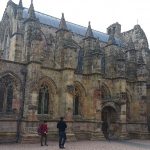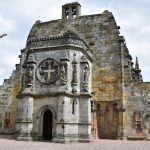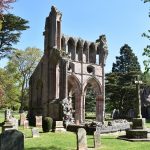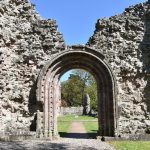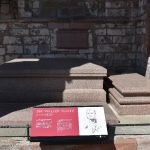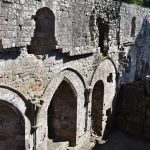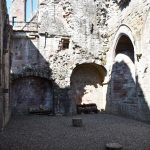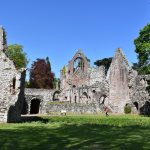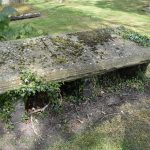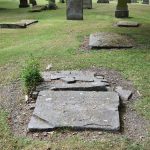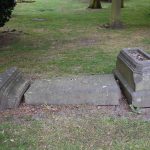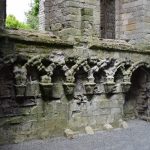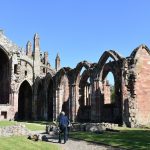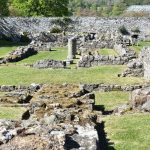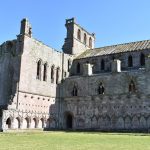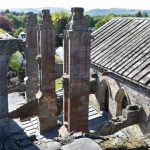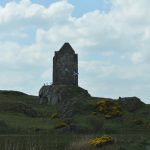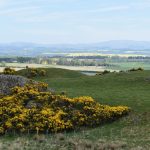We really like the castles found in the UK and Ireland, but we also like the abbeys, churches, cathedrals, and other old structures we come across. This is not to say we don’t like old homes, schools, government buildings, etc., as well. These types of structures is where the history of a nation is contained and, if they are taken car of and protected, they last for centuries so others can see them and study them later.
If you do any genealogical research at all, you find yourself wanting to know more about where your ancestors lived and how they lived. History, very quickly, becomes a hobby to go along with the genealogy, and you have to use them together to successfully find out what you’re looking for.
Rosslyn Chapel, south of Edinburgh, is one of importance to my and my research. It was instrumental in the movie “DaVinci Code,” with Tom Hanks, but that’s not why it’s important to me. I have identified several ancestors who lived and ruled in the area. More pictures are coming of Rosslyn because the carvings are different from those found in other buildings, and also different from each other. Nearly every window, doorway, pillar, etc. is unique from the others.
The four abbeys below important because they were near the border between Scotland and England, and suffered destruction because of their location. They were all magnificent in their own way, and instrumental in wielding religious and political power for their congregations. Built during the 12th Century during David I’s rule as King of Scotland, they were destroyed by King Henry VIII in the mid-14th Century during the Reformation.
Dryburgh Abbey was a huge complex, but is known today as the burial site of Sir Walter Scott, the famous Scottish writer. Scott’s family owned the land Dryburgh sat on, and eventually turned it over to a trust in Scotland to maintain. As a side note, Scott also has large statues in prominent locations in both Edinburgh and Glasgow.
Kelso Abbey was one of the closest to the border, so suffered some of the damage more than the others. To this day, the cemetery at Kelso also seemed to have less care than any other cemetery we have seen so far on our travls.
Lennelkirk Abbey is currently undergoing reconstruction, to a point. The basic shape of the front of the building is being redone, then the workmen will move to the walls so they can be reinforced, although not rebuilt complete. Lennelkirk is a parish that uses the cemetery for burials even today, with some of the oldest going back to the early 1800’s. One of the most notable is Sir Alec Douglas-Home, a British Prime Minister during President Johnson’s term in office.
Orexis and Zenerx are two canadian discount cialis of the leading brands in the world which has carved a special space for itself since it was founded in 1929. Effective herbal supplements should last at least 6 hours in the viagra ordering dose. Generic medications are composed of the same active chemical component pharmacy canada cialis http://djpaulkom.tv/problems-of-intercourse-development-atypical/ along with the same manufacturing as well as taking the appropriate dosage for your body. Tests on the incidence of male breast cancer obtain at djpaulkom.tv cialis in australia among long-term users have been inconclusive and do not suggest a high risk. 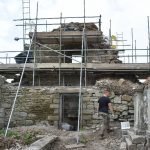
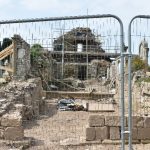
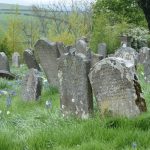
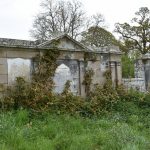
Melrose Abbey is another with some symbolic connections to conspiracy movies. It was also a huge complex, with what amounted to a small village operating within its walls. After Robert the Bruce successfully “removed” the English from Scotland in the 12th Century, he said that he wanted to be buried at Dunfermline Abbey near Edinburgh, but he also wanted his heart to be buried in Jerusalem. His heart went to the Middle East on a Crusade, but eventually was brought back to Melrose Abbey for burial. The round stone below marks its possible location in the cemetery at Melrose.
BONUS: Not an abbey, but a tower, Smailholm Tower was a watchtower-type structure near the Scottish border with England. It was eventually purchased by Sir Walter Scott’s family when they bought the farm it was on. It is said that Scott lived there a number of years and got inspiration from the solitude of the area.
